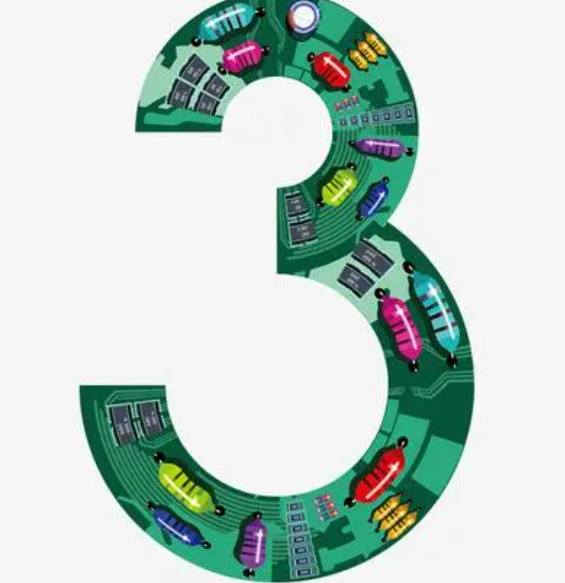
Characteristic impedance problem of PCB technology in high-speed design
In high-speed design, the problem of characteristic impedance of controlled impedance boards and circuits has puzzled many Chinese engineers. In this paper, the basic properties, calculation and measurement methods of characteristic impedance are introduced in a simple and intuitive way.
In high-speed design, the characteristic impedance of controllable impedance boards and circuits is one of the most important and common problems. A transmission line consists of two conductors of a certain length, one for sending signals and the other for receiving them (remember the concept of "loop" instead of "ground"). In a multilayer board, each line is an integral part of a transmission line, with the adjacent reference plane serving as a second line or loop. The key to a line being a "good performing" transmission line is to keep its characteristic impedance constant throughout the line.
The key to a circuit board becoming a "controlled impedance board" is to make the characteristic impedance of all the circuits meet a specified value, usually between 25 ohm and 70 ohm. In multilayer circuit boards, the key to good transmission line performance is to keep its characteristic impedance constant throughout the line.
But what exactly is characteristic impedance? The easiest way to understand the characteristic impedance is to look at what the signal hits in transit. When moving along a transmission line with the same cross section, this resembles the microwave transmission shown in Figure 1. Suppose a voltage step wave of 1 volt is added to the transmission line. For example, if a 1 volt battery is connected to the front of the transmission line (which is between the transmission line and the loop), once connected, the voltage wave signal travels along the line at the speed of light. It usually travels at a speed of about 6 inches per nanosecond. Of course, the signal is really the voltage difference between the sending line and the loop, which can be measured from any point on the sending line and the point of contact with the loop. Figure 2 is a schematic diagram of the voltage signal transmission.
Zen's approach is to "generate the signal" and then propagate it along this transmission line at about 6 inches per nanosecond. The first 0.01 nanosecond advances 0.06 inches, when the sending line has an excess positive charge and the loop has an excess negative charge. It is this charge difference that maintains the 1 volt difference between the two conductors, which in turn make up a capacitor.

In the next 0.01 nanosecond, the voltage of a 0.06-inch transmission line is adjusted from 0 to 1 volt, which must add some positive charge to the sending line and some negative charge to the receiving line. For every 0.06 inches moved, more positive charge must be added to the sending line and more negative charge to the loop. Every 0.01 nanosecond, another section of the transmission line must be charged, and the signal begins to travel along that section. The charge comes from the battery at the front of the transmission line, and as it moves along the line, it charges the continuous part of the transmission line, thus creating a voltage difference of one volt between the sending line and the loop. For every 0.01 nanosecond advance, some charge (±Q) is gained from the battery, and constant charge (±Q) flowing out of the battery over a constant time interval (±t) is a constant current. The negative current flowing into the loop is actually equal to the positive current flowing out, and just in front of the signal wave, the AC current passes through the capacitor formed by the upper and lower lines, ending the cycle.
For the battery, a continuous 0.06-inch line segment is charged every 0.01 nanosecond as the signal travels along the line. When a constant current is obtained from the power source, the transmission line looks like an impedance and has a constant impedance value, which can be called the "surge impedance" of the transmission line.
Similarly, as the signal travels along the line, which current will increase the voltage of this step to 1 volt within 0.01 nanosecond before the next step? This brings us to the concept of instantaneous impedance.
When viewed from the cell's point of view, if the signal travels at a steady rate along the transmission line and the transmission line has the same cross section, the same amount of charge is required for each step forward in 0.01 nanosecond to produce the same signal voltage. When advancing along this line, the same instantaneous impedance is created, which is treated as a property of the transmission line, known as the characteristic impedance. A transmission line may be considered a controllable impedance line if the characteristic impedance of the signal is the same at each step of the transmission process.
Instantaneous impedance, or characteristic impedance, is very important for the quality of signal transmission. During the transfer process, if the impedance of the next step is equal to that of the previous step, the work will proceed smoothly, but if the impedance changes, there will be some problems.
In order to achieve the best signal quality, the design goal of the internal connection is to keep the impedance as stable as possible during the signal transmission process. First, the characteristic impedance of the transmission line must be kept stable. Therefore, the production of controllable impedance boards is becoming more and more important. In addition, other methods such as minimization of residual line length, terminal removal and the use of whole line are also used to maintain the stability of instantaneous impedance in signal transmission.









